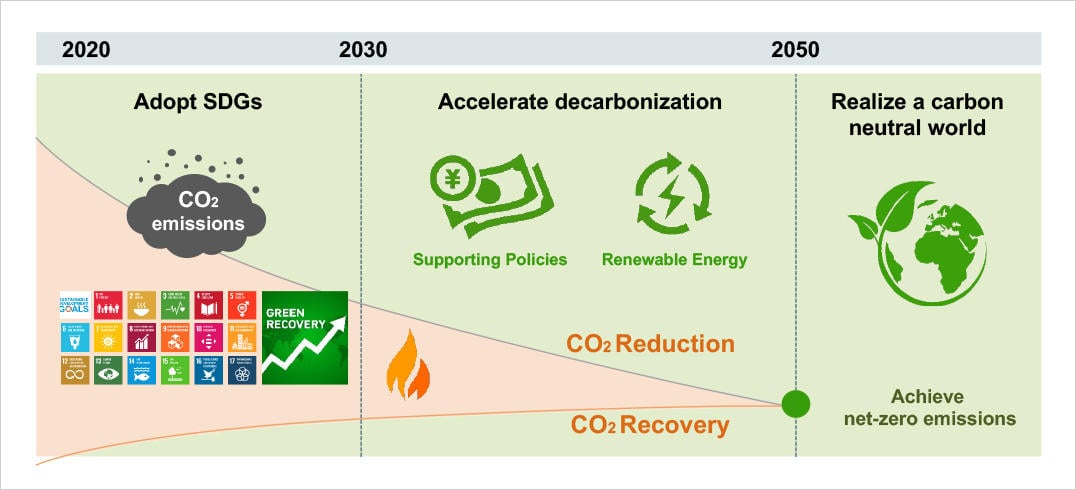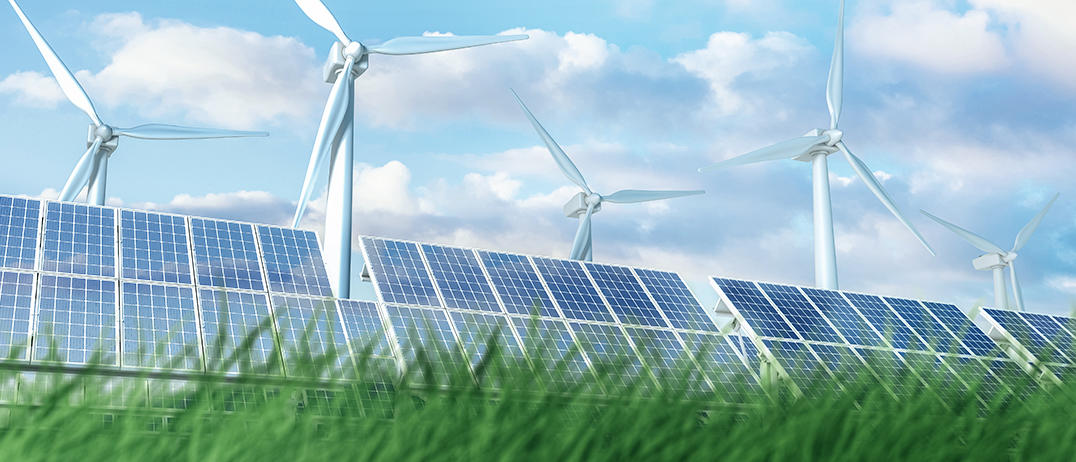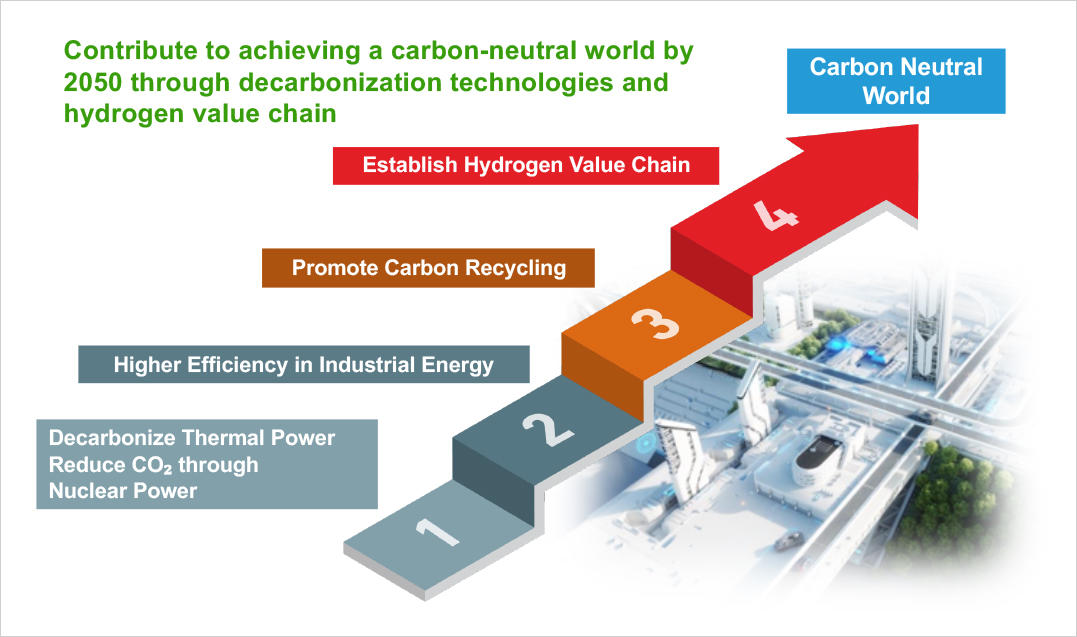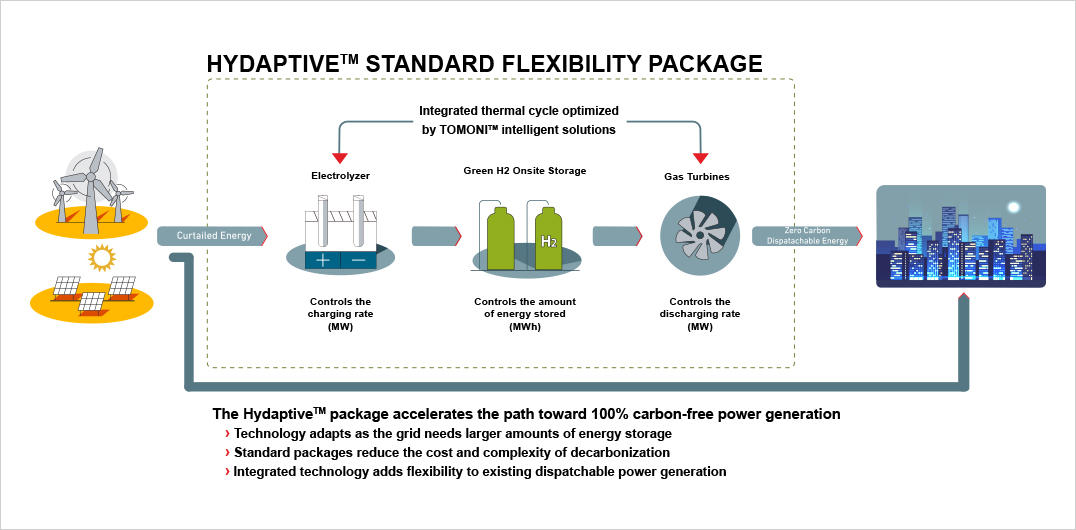Accelerating the shift to decarbonization.
Driving the potential of hydrogen generation.
March 1, 2021

1. The world is now aligned to become a Hydrogen Society
In 2019, the EU announced their action plan to achieve the carbon-neutral target by 2050. On October 26, 2020, Prime Minister Suga declared that by 2050, Japan aims to become a decarbonized nation with zero greenhouse gas emissions. A month earlier, President Xi Jinping of China announced that they aim to go carbon-neutral by 2060. And in January 2021, the new U.S. president, Joe Biden signed an executive order to rejoin the Paris Treaty. The world is now picking up the pace to achieving carbon-neutrality with increasing usage of hydrogen to produce CO2 free energy.
2. The Roadmap towards a Carbon-Neutral Society
At present, majority of energy production in the world relies on thermal power using an affordable, safe, and stable fossil fuel.To realize the carbon-neutral society in the future, Mitsubishi Power will continue to support the current power generating methods with a major focus of reducing CO2 emissions and driving carbon capture. At the same time, the company will continue to promote the use of renewable energy as well as mixed combustion of hydrogen or ammonia which produces no CO2. In addition, Mitsubishi Power will continually increase the ratio of hydrogen to 100%, eventually removing all carbon emissions, enabling us to reach our goal.

3. What we aim for is a mass-scale generation with green hydrogen
Hydrogen can be produced in a variety of ways. If we use fossil fuel, we need to introduce a catalyst to modify its construct during which CO2 is released. It also can be generated from water by electrolysis without emitting CO2. In that case, we need energy for the electrolysis and the question becomes, from where we source this energy. What is essential in hydrogen generation is to source “green hydrogen” which is 100% carbon-free at low cost. Power generation from green hydrogen is vital to making a carbon-neutral society a reality.
Green/Blue Hydrogen
For example, if we use excess energy from wind and other renewable energy sources for water electrolysis, we can generate hydrogen without any CO2 emission in the process. Such hydrogen is called “green hydrogen.” Also, hydrogen produced from fossil fuel is called grey hydrogen. When the CO2 during the process is collected and stored, it is called blue hydrogen, another important solution for a zero-carbon society.
Also, the use of stored green hydrogen will help to compensate for output fluctuations from wind and solar generation. While battery and other storage technologies are effective solutions for a short-term supply/demand adjustment, cost and technical issues remain when it comes to adjusting large-scale supply/demand imbalance due to season and location. Because hydrogen energy can be stored/transported in large scale, this will solve the need for long-term adjustment which is the reason why countries are now considering the potential for hydrogen as their solution.

4. Transport/store/burn hydrogen as ammonia
Now, how can green hydrogen be transported and stored? There are multiple options such as liquefying by cooling, converting to methylcyclohexane (MCH), etc., but they all carry some challenges. One of the more promising method is to use ammonia (NH3), a compound of hydrogen and nitrogen. As ammonia carries 3 hydrogen (H) atoms in a single ammonia atom, it has high concentration of hydrogen making the infrastructure for transport/storage relatively small. As it can be handled at room temperature, it is suited for long-distance transport. It is already distributed internationally so production/transport/storage can be covered with existing infrastructure. Also, it allows direct combustion for power generation and does not produce CO2. However, compared to hydrogen, it produces substantial NOx which means a selective catalytic reduction (SCR) is required for treating the gas emission.
5. Energy Transition and Solution
Mitsubishi Heavy Industries (MHI) Group identifies the five steps to a carbon-neutral society as: “Decarbonization of Thermal Power Generation,” “Efficient Energy Use in Industries,” “Promoting Carbon Recycle,” and “Developing the Hydrogen Value Chain.” MHI aims to offer solutions for each step along the way. We are already a part of several large-scale global projects and continue to support their success.

Converting Natural Gas Combustion Turbine into Hydrogen-Exclusive
Mitsubishi Power is taking part in the hydrogen conversion of a natural gas combustion turbine combined cycle (GTCC) at the Magnum Power Plant in the Netherlands. The project aims to convert one of the three existing M701F gas turbines to a 100%-hydrogen firing device and ultimately drive demand for hydrogen amongst thermal power businesses. MHI Group also has the Carbon Capture and Storage (CCS) technology, essential for supplying carbon-free (blue) hydrogen, playing a vital role towards a hydrogen society.
Public-private green hydrogen strategy for the region
Mitsubishi Power is also instrumental in the launch of the Western Green Hydrogen Initiative (WGHI) in the Western Region of the U.S. In addition, two Canadian provinces are part of the Initiative supporting the green hydrogen strategy for the region that includes large-scale green-hydrogen storage. They expect to reinforce the reliability and independence of the energy across the Western region by actively adopting green hydrogen, creating jobs locally, avoiding creation of uneconomical grids, re-using existing infrastructure, and diversifying energy across multiple sectors are amongst other benefits.
The world's first integrated green hydrogen solution
Mitsubishi Power has also begun providing the world's first integrated green hydrogen solution that includes power balancing and energy storage across multiple projects in the U.S. The integrated green hydrogen solutions are the Hydaptive™ integrated package and Hydaptive™ Storage package. The Hydaptive™ package provides renewable energy flexibility by acting as a near-instantaneous power balancing resource that greatly enhances the ability of a simple cycle or combined cycle power plant to ramp output up and down to provide grid balancing services. It integrates a hydrogen and natural gas fueled gas turbine power plant with electrolysis to produce green hydrogen using 100% renewable power and onsite storage of green hydrogen. Patent-pending TOMONI™ software and controls enable rapid load response by integrating operations of the gas turbines and the electrolysis plants. The Hydaptive™ Storage package combines the Hydaptive™ package with access to a large-scale off-site hydrogen production and storage infrastructure to sustain the supply of carbon-free green hydrogen, during the peak energy demand period.
The two combined will solve the challenges faced by power plants operators and power transmission companies by integrating renewable energy, gas turbine, green hydrogen, and fuel storage technology, etc., to drive the momentum towards an 100% carbon-free power generation.

Storing green hydrogen in salt domes
Together with Magnum Development, Mitsubishi Power is driving the Advanced Clean Energy Storage Project. Using power generated from wind and solar power, the electrolyzer produces green hydrogen which is then stored in an underground salt dome controlled by Magnum Development. Hydrogen is then provided to the power plants as needed. The salt dome has the capacity to store the equivalent of 150GWh of energy.

Mitsubishi Powerhas cutting-edge hydrogen combustion technologies, and its hydrogen gas turbine requires minimum modification to the existing infrastructures at the power plants. In 2018, Mitsubishi Power had already achieved 30% hydrogen co-combustion and aims to make this 100% hydrogen by 2025. Large-scale hydrogen generation is a crucial piece in creating a truly sustainable society across the globe. Cost is a challenge today, however as technology evolves, we will continue to reduce the cost of green hydrogen. Mitsubishi Power is fully committed to playing a significant leadership role in addressing this global obligation and deliver technological advancements to attain a carbon-free hydrogen society.



